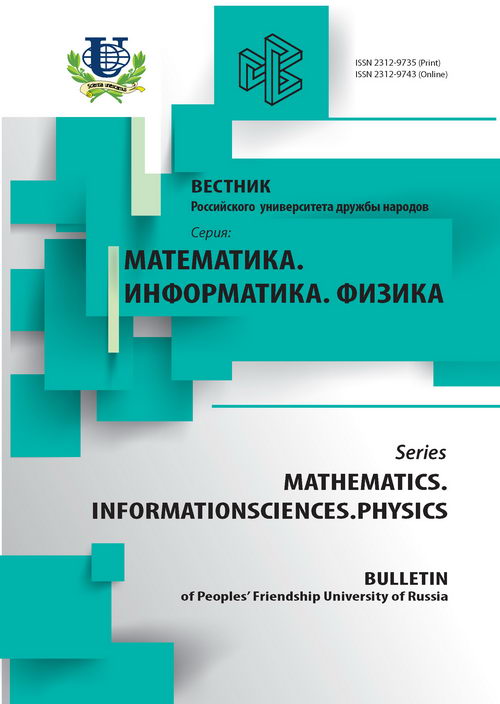Instability of an Extraordinary Wave in a Hot Plasma
- Authors: Dorofeenko VG1, Krasovitskiy VB1, Turikov VA2
-
Affiliations:
- Keldysh Institute of Applied Mathematics, Russian Academy of Sciences
- Russian University of Peoples’ Friendship
- Issue: No 3 (2014)
- Pages: 145-153
- Section: Articles
- URL: https://journals.rudn.ru/miph/article/view/8240
Cite item
Full Text
Abstract
In this paper the investigation of the laser wave parametric decay in the hot magnetized plasma is performed taking into account the relativistic electron mass. Strong external magnetic field affects essentially the efficiency of laser radiation energy input into plasma. The magnetic field of the wave modulates the external magnetic field which leads to the parametric acceleration of electrons in the crossing fields and to the amplification of the charge separation field. In this process up to 85% of the laser radiation energy transforms into the energy of plasma particles. The analysis of nonlinear dynamics of the extraordinary electromagnetic wave in the strong external magnetic field in the conditions of the parametric decay shows that the exponential increase in the amplitude of the secondary wave exited at half-frequency of the primary wave changes into a reverse process in which the energy returns to the primary wave and causes the large amplitude oscillations in plasma. Unlike the previous papers in this area the investigation considers the parametric decay in the plasma preliminary heated up to the relativistic temperature. The self-similar system of nonlinear equations in total derivatives which takes into account the relativistic heat electron mass is derived. The small perturbations of the heated plasma parameters are investigated using the dispersion equation which defines the phase and group velocities of the slow and fast extraordinary waves in the linear approximation. It is shown that unlike the cold plasma in the linear approximation the non-transparency band in the frequency region higher than upper-hybrid electron frequency disappears. Moreover, the asymptotes of the dispersion branches in the high frequency regions approach each other. In the final part of the paper the calculation of the parametric instability increment is performed. It reaches the maximum value when the exited wave frequency is equal exactly half the frequency of the laser pump wave. The analytical expression for the maximum increment is derived and its dependence on the electron thermal velocity is investigated.
About the authors
V G Dorofeenko
Keldysh Institute of Applied Mathematics, Russian Academy of Sciences
Email: dorofeen@gmail.com
Department of Kinetic Equations
V B Krasovitskiy
Keldysh Institute of Applied Mathematics, Russian Academy of SciencesDepartment of Kinetic Equations
V A Turikov
Russian University of Peoples’ Friendship
Email: vturikov@yandex.ru
Department of Applied Physics
References
















